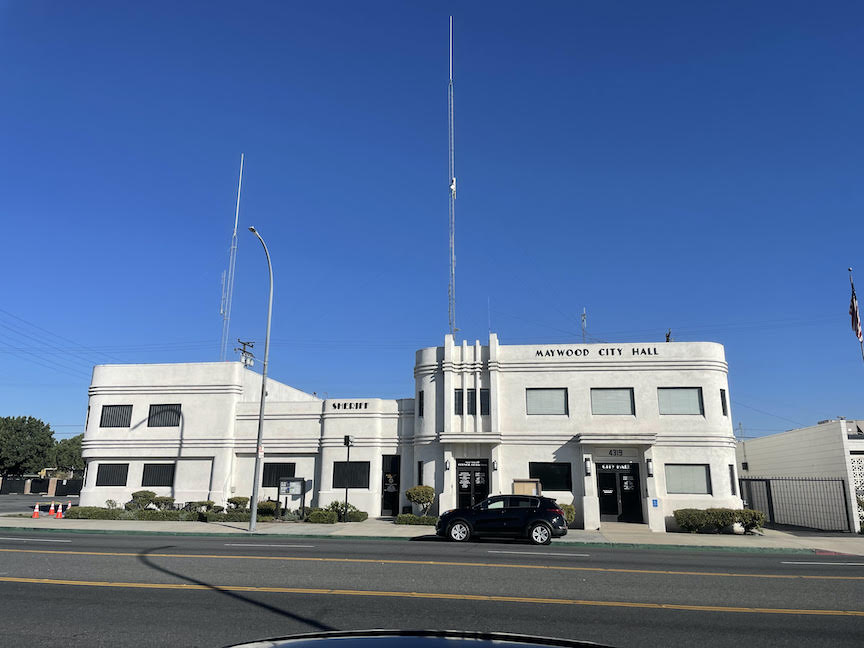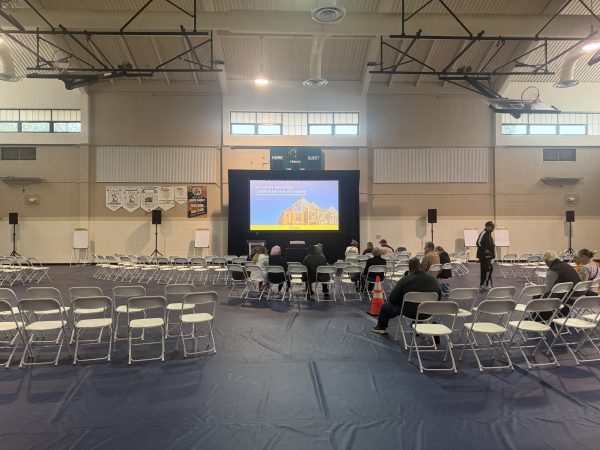Maywood plans aim to reduce greenhouse gasses and make the city more bike-friendly
Maywood City Hall. Photo by Andres Perez
Maywood City Hall. Photo by Andres Perez
Reducing greenhouse gas emissions. Benefits for a sustainable city. Combating climate change. Increasing bike lanes.
Those are actions discussed at a recent Maywood City Council meeting when two projects to combat climate change were discussed.
Jeff Caton, director of Sustainable Communities at Environmental Science Associates (ESA), said the city could reduce greenhouse gas emissions through the Climate Action, Adaption, and Resiliency Plan (CAARP). ESA is an environmental consulting firm.
Caton said he hopes to grow a community more resilient to climate change by outlining some environmental, social, and economic benefits of a more sustainable city.
State laws SB 32 and AB 1279 require that greenhouse gas emissions are reduced to 40% below 1990 levels by 2030 and 85% below 1990 levels by 2045. CAARP is paving the way for Maywood’s implementation of these laws.
Maywood is at risk of rising temperatures, more prolonged and more severe droughts, and worsening air quality due to the effects of climate change.
Maywood is one of the most densely populated cities in California.
According to Caton, low-income communities, undocumented immigrants, non-English speakers, and the homeless are several groups who would be the most impacted by these severe climate changes.
With the plan, Caton expects improvements in public health and a low-carbon and sustainable economy.
“Residents and businesses can expect cost savings whether that’s through use of more efficient energy or less use of fuel, or even on a community-wide basis reducing the cost of health care,” which can lead to social equity, he said.
Carlos Velasquez, a senior organizer and vice president of KOA Corp., introduced the city of Maywood’s “Active Transportation Plan” to support efforts made by CAARP.
The plan emphasizes the importance of the city’s support for motorized and non-motorized modes of transportation. While the city benefits from being close to the LA River Regional Bikeway, there are insufficient bike paths within Maywood, according to Velasquez.
The goal is to improve mobility within the city and make it safer for all.
Data collected by KOA found that the intersection of Slauson Avenue and Atlantic Boulevard has the highest levels of traffic activity. The data also shows that the highest numbers of collisions happen near schools within the city of Maywood.
Velasquez said something must be done: “Students walking to and from these schools face life or death situations on a daily basis.”
Involving the community in the planning is key, according to city leaders. Currently, KOA is planning on organizing five community workshops at upcoming city events to share details and get feedback.
The project began two months ago, making data collection crucial in the city’s plans to ultimately improve mobility infrastructures and efficiency throughout the city of Maywood.











